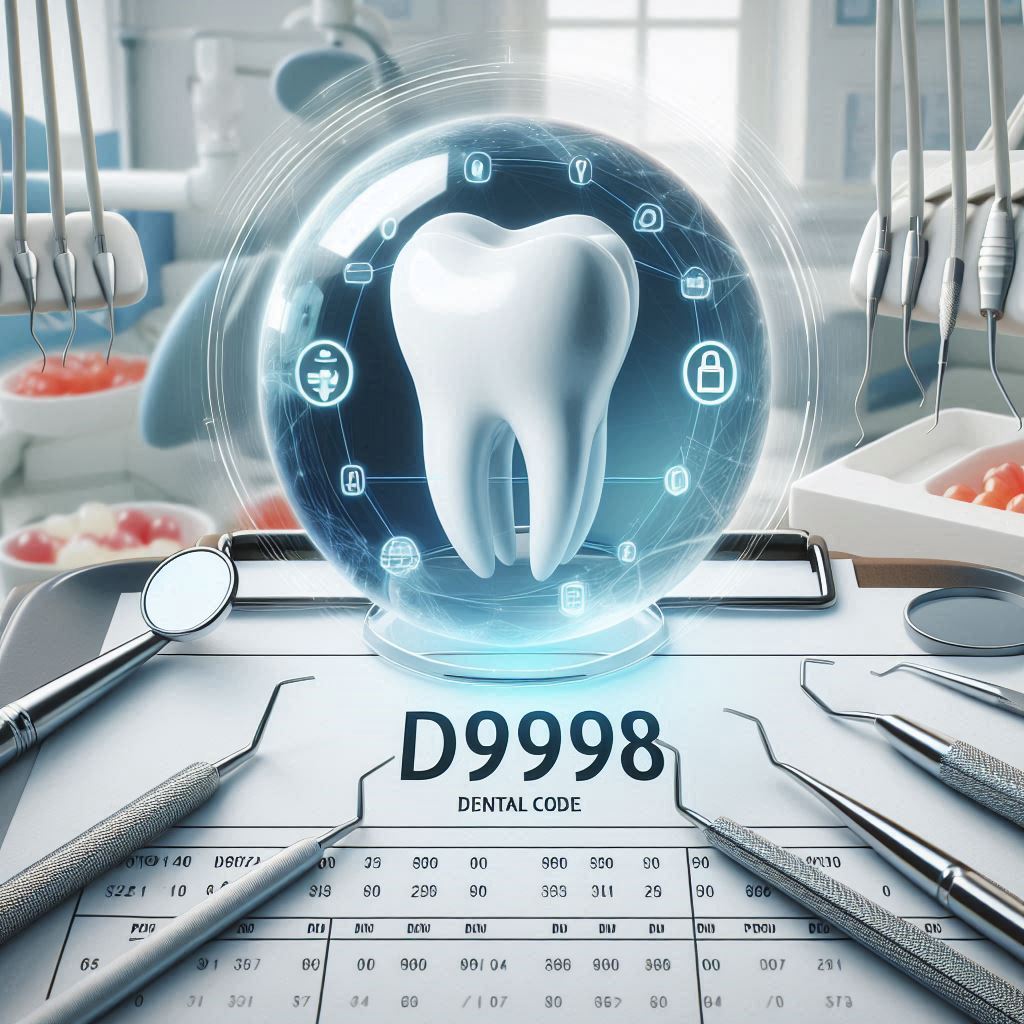D9998 Dental Code
The D9998 dental code is a unique and often misunderstood billing code used in dental practices. While most dental codes correspond to specific procedures like fillings, extractions, or cleanings, D9998 serves a different purpose—it is a “non-covered service” code. This means it is used when a procedure or service is not typically covered by a patient’s insurance but is still provided by the dentist.
Understanding D9998 is crucial for dental professionals, insurance coordinators, and patients alike. Misuse of this code can lead to claim denials, billing disputes, and confusion. This comprehensive guide will explore everything you need to know about D9998, including its purpose, proper usage, insurance implications, and best practices for implementation.

2. What is the D9998 Dental Code?
The D9998 code is part of the American Dental Association (ADA) Current Dental Terminology (CDT) Code Set. It is officially defined as:
“D9998 – Unspecified adjunctive procedure, by report”
Unlike most CDT codes, which describe specific treatments (e.g., D1110 for prophylaxis or D2740 for a crown), D9998 is a catch-all code used when no other code accurately describes the service provided.
Key Characteristics of D9998:
✅ Non-covered service – Often used when insurance does not recognize a procedure.
✅ By-report basis – Requires additional documentation to justify its use.
✅ Flexible application – Can be adapted for unique or uncommon dental services.
3. Purpose and Applications of D9998
Dentists use D9998 in several scenarios, including:
A. Experimental or Emerging Treatments
- Some advanced dental procedures (e.g., laser gum therapy, 3D-printed restorations) may not yet have an assigned CDT code.
- D9998 allows dentists to bill for these services while providing detailed documentation.
B. Non-Standard Services
- Teledentistry consultations (if not covered under a separate code).
- Specialized patient education sessions beyond standard care.
C. Insurance Limitations
- If a patient’s insurance excludes a particular treatment (e.g., cosmetic procedures), D9998 can be used to bill the patient directly.
4. When is D9998 Used in Dental Practices?
| Scenario | Example | Why Use D9998? |
|---|---|---|
| New Technology | Laser cavity detection | No specific CDT code exists yet |
| Non-Covered Service | Teeth whitening for cosmetic reasons | Insurance does not cover it |
| Adjunctive Procedure | Specialized oral cancer screening | Not part of routine exams |
Real-World Example:
A dentist uses DIAGNOdent (laser caries detection)—a tool not yet assigned a CDT code. Since insurance may not recognize it, the office bills under D9998 with a narrative explaining the service.
5. Differences Between D9998 and Other Dental Codes
Many dental codes are procedure-specific, but D9998 is a “by report” code, meaning:
| Feature | D9998 | Standard CDT Codes (e.g., D2140) |
|---|---|---|
| Specificity | Broad, unspecified | Exact procedure defined |
| Documentation | Requires detailed notes | Standardized description |
| Insurance Coverage | Often denied or patient-paid | Typically covered (if applicable) |
6. Insurance and Reimbursement Considerations
- Most insurers reject D9998 claims unless accompanied by strong justification.
- Patients may be billed directly if the service is non-covered.
- Best Practice: Always inform patients in advance if D9998 will be used.
7. Common Misconceptions About D9998
❌ Myth: “D9998 is a way to get insurance to pay for anything.”
✅ Fact: It is for non-covered services and requires documentation.
❌ Myth: “D9998 can replace any CDT code.”
✅ Fact: It should only be used when no other code applies.
8. Best Practices for Dentists Using D9998
✔ Document thoroughly – Include procedure details, necessity, and patient consent.
✔ Communicate with patients – Explain why this code is being used.
✔ Check insurer policies – Some may require pre-authorization.
9. Case Studies and Real-World Examples
Case Study 1: Teledentistry Consultation
A patient in a rural area receives a virtual consultation for a possible infection. Since teledentistry codes vary by insurer, the dentist uses D9998 and submits a report.
Case Study 2: 3D-Printed Night Guard
A lab creates a custom 3D-printed night guard, but no CDT code exists yet. The office bills under D9998 with supporting documentation.
10. Frequently Asked Questions (FAQs)
Q1: Can D9998 be used for cosmetic dentistry?
A: Yes, if the procedure is not covered by insurance (e.g., veneers for aesthetic purposes).
Q2: Will insurance ever pay for D9998?
A: Rarely—most insurers require pre-approval and strong justification.
Q3: How should dentists document D9998 usage?
A: Include a detailed narrative, photos (if applicable), and patient consent forms.
11. Conclusion
The D9998 dental code is a valuable tool for billing non-standard or non-covered services. Proper documentation and patient communication are essential to avoid disputes. While insurers rarely reimburse D9998, it ensures transparency when no other CDT code applies. By following best practices, dental professionals can use this code effectively while maintaining compliance.


